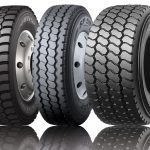Saving fuel: Scania has a double-handed approach
Saving fuel: Scania has a double-handed approach
Fuel is a transport operator’s single biggest running cost and any savings in this regard can make a substantial benefit to the bottom line. Buying the right truck will help, but it’s very important to manage that truck properly – using sophisticated fleet management systems.
One such system is Scania Fleet Management Service (FMS) and, as Scania connected services manager Shiraz Hashimbhai notes, it goes hand-in-hand with the actual truck. “Vehicle data recorded from multiple Scania trucks in daily operation, using multiple drivers, has yielded an average 10% fuel saving across the New Truck Generation range.”
These fuel savings have been proven across the globe. Recently, in Europe, Scania’s 540 S tractor went head-on against rival trucks in the 1000 Punkte Test (1000 Point Test) and European Truck Challenge (ETC) – and the Scania won both!
Scania has lowest fuel consumption
The truck’s fuel efficiency once again came to the fore, says Stefan Dorski, senior vice president and head of Scania Trucks. “Winning these comparison tests is yet another point of proof for Scania’s industry-leading position. I am most proud of the fact that our truck has the lowest fuel consumption while at the same time offering the highest average speed. It highlights Scania’s inherent transport efficiency.”
When one takes an already fuel-efficient truck like the New Truck Generation and team it with telematics, the potential benefits are even greater. In this regard, he proposes the use of the FMS. “It requires a Scania Communicator telematics unit to be installed in the vehicle. This unit collects, saves, sends and receives information for analysis and presentation on the Scania Fleet Management portal and in the Monitoring Report. This is to provide clients with clear information on their fleet’s performance,” he explains.
“The client can spot potential problems early, be able to coach drivers into adopting more economical driving habits, for instance, and improve their service planning.”

Promoting more efficient driving
Scania’s FMS comes with a Fleet Management Monitoring package – and one of its goals is to shave thousands of rands off a transport operator’s fuel bill. The monitoring report includes Scania Driver Support, which generates average driver scores, as well as a change in fuel consumption report; a report on CO2 emissions; coasting (where driving in gear without fuel injection is encouraged), and economical speed, whereby a speed limit can be pre-set. Other aspects of fleet management covered in the monitoring report include reports on idling, fuel consumption and heavy braking.
“The client receives weekly e-mail summaries covering all their vehicles. From these, they can see at a glance how each vehicle is performing, and which ones need attention,” Hashimbhai explains.
Many other benefits too
There are many other benefits to using Scania’s FMS. “Our clients have access to the Scania Fleet Management portal, designed to manage service planning, which provides an overview of all the equipment in your fleet, along with their maintenance plans, including a calendar for keeping track of maintenance and repairs,” says Hashimbhai.
The free Scania Fleet Management app provides access to the defect reporting function, whereby drivers can report problems and supply photographs directly from the site of the incident. These defect reports, which are also reported automatically by the vehicle, combine defect reports with planned maintenance and are sent to the workshop as work orders.
Clients can also access additional information and functions including Fleet Positioning; Service Planning (which provides control over the maintenance and repair requirements of a fleet) and Driver Evaluation. “The Driver Evaluation service provides an overview of driving behaviour, enabling the fleet owner to improve the training received by drivers. Drivers are assessed on a scale, based on driving assignments and on the vehicles they drive. This ensures a fair grade based on the conditions faced by the driver,” says Hashimbhai.
Ultimately, this transforms a good driver into an excellent – and very fuel-conscious – driver. Combine that with a fuel-efficient truck and the sky’s the limit when it comes to fuel savings!
Published by
Focus on Transport
focusmagsa



